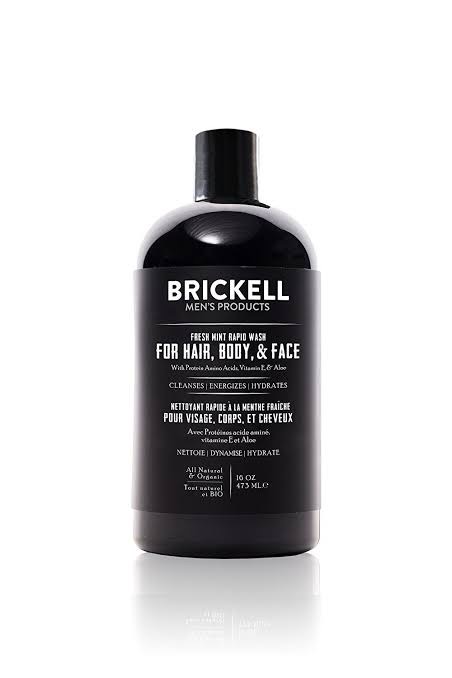Men’s grooming products have come a long way, and Brickell Men’s Invigorating Mint Body Wash is a prime example of a product that promises to elevate your daily shower routine. Known for its natural ingredients and invigorating scent, this body wash aims to provide a refreshing and effective cleanse. Let’s explore what makes this body wash a standout choice for men.
Overview
Brand: BrickellProduct: Men’s Invigorating Mint Body WashSize: 16 fl oz (473 ml)Key Ingredients: Aloe vera, jojoba oil, glycerin, tea tree oil, peppermint oil.
First Impressions

Brickell Men’s Invigorating Mint Body Wash comes in a stylish, dark green bottle that reflects the brand’s focus on natural ingredients and quality. The design is simple yet elegant, appealing to men who appreciate understated sophistication. The scent is immediately noticeable upon opening the bottle—an invigorating blend of peppermint and tea tree that promises a refreshing start to your day.
Ingredients and Benefits
Brickell prides itself on using natural and organic ingredients. Here are some of the key components of this body wash and their benefits:
– Aloe Vera: Known for its soothing and hydrating properties, aloe vera helps to calm the skin and lock in moisture, preventing dryness.
– Jojoba Oil: This oil mimics the skin’s natural oils, providing deep hydration and helping to balance oil production.
– Glycerin: A powerful humectant, glycerin attracts moisture to the skin, ensuring it stays hydrated and soft.
– Tea Tree Oil: Renowned for its antibacterial and anti-inflammatory properties, tea tree oil helps to cleanse the skin thoroughly and prevent breakouts.
– Peppermint Oil: Provides a cooling sensation that invigorates the skin, making it feel refreshed and energized.
Performance
Cleansing Power: Brickell Men’s Invigorating Mint Body Wash lathers well, creating a rich foam that effectively removes dirt, sweat, and oil. It leaves the skin feeling clean without any residue.
Scent: The peppermint and tea tree oil blend gives this body wash a refreshing, minty scent that is both energizing and long-lasting. The fragrance lingers subtly on the skin, providing a clean and crisp aroma throughout the day.
Hydration: Thanks to ingredients like aloe vera, jojoba oil, and glycerin, this body wash delivers excellent hydration. It helps to prevent dryness and leaves the skin feeling smooth and moisturized after each use.
Skin Sensitivity: With its natural and organic ingredients, this body wash is suitable for all skin types, including sensitive skin. It does not contain harsh chemicals or synthetic fragrances, reducing the risk of irritation or allergic reactions.
Pros and Cons
Pros:
– Natural Ingredients: Free from parabens, sulfates, and synthetic fragrances, making it a healthier choice for your skin.
– Moisturizing: Leaves the skin hydrated and soft, thanks to aloe vera, jojoba oil, and glycerin.
– Refreshing Scent: The peppermint and tea tree oil provide an invigorating and long-lasting fragrance.
– Gentle: Suitable for sensitive skin and daily use.
Cons:
– Price: It is priced higher than some mainstream body washes, but the quality and natural ingredients justify the cost.
– Availability: Depending on your location, it may not be as readily available as other brands and might require online purchasing.
Final Verdict

Brickell Men’s Invigorating Mint Body Wash is a top-tier choice for men who value natural ingredients and a refreshing shower experience. Its blend of peppermint and tea tree oil provides an invigorating scent. That wakes you up and leaves you feeling energized. The hydrating properties of aloe vera, jojoba oil, and glycerin ensure your skin stays smooth and moisturized.
While it may be more expensive than typical body washes. The investment in quality and skin health is well worth it. If you’re looking to enhance your daily grooming routine with a body wash that delivers on both performance and sensory experience. Brickell’s Invigorating Mint Body Wash is an excellent option to consider.

